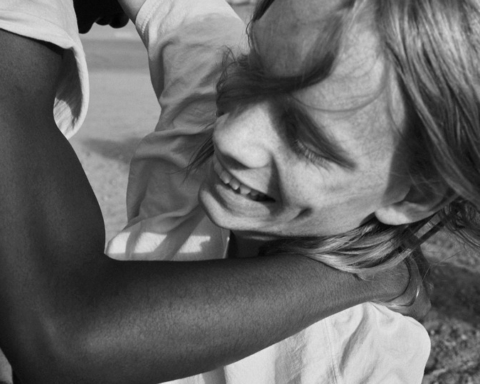“Getting help for mental health is not enough. We live in a world where people don’t want to live in it anymore. We need to change the world.” – @nikkimwalls
~~~
I think about suicide a lot.
That is a loaded sentence. I mean it in two specific ways: 1. I often think about killing myself; 2. I often think about suicide as a phenomenon, one that is far too common in our culture. This article is not exactly a cry for help. At least not for myself.
When I think about killing myself, it is a fleeting thought in a moment of high stress, anxiety, or sadness. Or it is a passing thought in mundane moment of everyday life when it might be so easy like standing at the edge of the subway platform or walking across a bridge. I have never premeditated a plan or thought about killing myself at some set point or time. That is not to say that you would not be justified in being concerned about me. But not any more than we should all be concerned about everyone we care about in a world so difficult to live in.
Before I began a stint in therapy last year, I wrote an email introducing myself to the potential therapist. I described myself as having “dark thoughts,” sometimes crippling anxiety, and creeping depression. I did not describe myself as being suicidal or having suicidal ideations (of which there are a range), because I did not yet know what this person’s threshold was, and I was afraid of triggering any of her obligations of mandated reporting.
When we met for the first time she made an important distinction, one that not only helped me understand her, but also helped me understand myself. “Sometimes,” she said, “when things feel so overwhelming, it might be comforting to think that it would be easy to just not be here; to just not want to be here. But that doesn’t mean that we actually don’t want to be here.”
Psychiatry distinguishes between suicidal ideation, intent and risk. Ideation is common and, while a mark of certain depressions, is no consistent indication of intent or risk to self-harm or death. I’ve thought about the fact of suicide for as long as I can remember—but those familiar vertiginous fancies, arising, say, at the edge of a subway platform (“how strange, just one more step, such a small and common act, most simple, most difficult”)—are a world away from the implacable terror or dread-like sensation that preceded my suicidal acts. Though still overly simplistic, the differentiation between suicidal ideation, intent and material risk goes some way to acknowledge that our sovereign relations with our own mortality, our control over it, are fraught and complicated. (Lennard, 2014, para. 6)
I don’t want to die. But sometimes I want things to be easier.
~~~
These thoughts came creeping back out of the darkness and into my conscious mind nearly eight years ago. They have lingered ever since.
I remember the moment it happened, sitting in the mostly empty second bedroom in the apartment I shared with my partner at the time. It was a warm summer day and the windows were open to let in the breeze. We sat on the floor. Her phone buzzed, she looked at it, and turned it face down. We made eye contact and I asked what that was. She said a phrase that never bodes well: “We need to talk.”
We had spent the last several months exploring non-monogamy, one in a series of band-aids attempting to save our relationship. She told me that the night before, the person she had been seeing regularly for several months had told her he loved her. This was not a surprise to me. I loved her. Everyone loved her. Who could possibly not love her if given the opportunity to get to know her? So I asked the question that has marked a moment I look back on for a number of reasons: “Do you love him?” She said yes. I remember looking over her shoulder and seeing the open window. I remember thinking, I could jump out the window; it would all go away; I wouldn’t have to look her in the eyes now, or ever again; I wouldn’t have to figure out what to do next; I wouldn’t have to know what it feels like to live with a broken heart.
Since that moment I have not been able to fully remove the whisper of darkness from my mind. It is always there, lingering, waiting for the anxiety, or sadness, or despondency to take hold.
When I was applying to PhD programs last fall, and had no concrete alternative plans should none of the programs accept me. I could just kill myself. When the loneliness got so overwhelming because the one person I wanted to spend all my time with lives across the country. Well, I could always kill myself. When I think about not making a difference. I could kill myself. When I think about failing. I could kill myself. When I think about being a disappointment. I could kill myself.
Sometimes it’s just a thought that passes through. More of an annoyance than a statement filled with any intent. Like a bee sting. Or a flash of lightning. Sometimes the trigger is obvious (stress, something I regret saying, more stress), and sometimes it seemingly arrives out of nowhere, disturbing a perfectly good drive or conversation I’m trying to hold with my roommate. At its most innocent, it’s distracting. At its worst, it gets stuck in my head. I sing it out loud to make it less scary. More than once, it’s involuntarily left my lips. (Schuster, 2017, pp. paras. 1-2)
It’s not about wanting to die. I don’t want to die. But sometimes I want things to be easier.
~~~
There is a fantastic analogy for depression and suicide that I really recommend you read in full. But here is the gist of it: Depression is like the winter, and self-care is shoveling snow. Some winters are pretty dry and it is relatively easy to maintain the driveway and keep your walkways clear. Some winters are one blizzard after another with day after day of subzero temperatures, and setting foot outside feels like a death sentence. Shoveling seems like an overwhelming obstacle. So you skip a day, and the snow begins to accumulate.
This analogy is not particularly meant to help those who struggle with depression. It is for others to understand what it feels like.
I don’t have a message for people with depression like “keep shoveling.” It’s asinine. Of course you’re going to keep shoveling the best you can, until you physically can’t, because who wants to freeze to death inside their own house? We know what the stakes are. My message is to everyone else. Grab a fucking shovel and help your neighbor. Slap a mini snow plow on the front of your truck and plow your neighborhood. Petition the city council to buy more salt trucks, so to speak. (Uncredited, 2018, para. 14)
~~~
I was 11 or 12 the first time a suicidal thought popped into my head, seemingly out of nowhere, like a hiccup or a monster lurking in the closet waiting for the light to turn off. Its instigator seems so silly now, so childish, so shockingly mundane. It was a Friday or Saturday, I was supposed to sleep over at Bud’s house with Anthony and Joey. I got into a fight with my mom—about what I cannot recall, but I am sure it wasn’t especially important—and she said I couldn’t go. The punishment felt devastating. I went to my room, angry, frustrated, and sad. I thought, I am going to kill myself. The thought lingered. It festered. I had mental images of knives and the darkened kitchen after everyone went to bed. The thoughts scared me, and I was scared for, and of, myself. Sometime after that, I wrote my mom a note and told her all of it. I asked for help and I got it. I talked openly with my mom about what I had been experiencing and I started seeing a therapist. The thoughts receded into the darkness, but never disappeared.
I think about suicide a lot.
I was 12 and sleeping over at Joey’s house, laying in matching twin beds, with a towel under the door to prevent the light of the television from leaking out, as we stayed up past our bedtime to watch Beavis and Butt-Head. It never came on because MTV News was airing uninterrupted coverage of the death of Kurt Cobain. Death by suicide.
I was two weeks shy of my 18th birthday when my friend Dave, one of the centerpieces of my extended junior and high school social circle, died by suicide.
I was 19, a freshman in college when the AOL Instant Messenger window popped up to tell me that my friend’s younger brother had died by suicide. I barely made it to the bathroom before I threw up.
This does not scratch the surface of the number of my friends who tried. Who thought about it. Who went for extended stays in mental health facilities for suicidal attempts and bipolar episodes.
This only covers my teens. They ended 15 years ago.
~~~
“There is only one emotion that patriarchy values when expressed by men; that emotion is anger. Real men get mad” (hooks, 2004, p. 14).
I love this quote, and I use it often. Most of my writing and my research have focused on the outward violence of men—violence that targets women, non-dominant men, queer folks, trans folks, and people of other marginalized identities. Men who are not physically, verbally, sexually, or psychologically violent toward their partners, kids, or strangers can still be angry. That anger often turns inward.
My frustrations, my anxiety, my disappointment can become anger. Anger at myself. When allowed to fester, that anger becomes dislike, becomes hate.
There are few things in my life that I am actively ashamed of, that are explicitly embarrassing to me. One of them is that in times of extreme hurt, frustration, or feeling overwhelmed, I have punched a wall or slammed my fist against a table or counter. Worse, I have hit myself, in the forehead or side of the head, with an open palm. I have never cut myself, but I understand the feeling for a need to release, like a pressure valve that has to be turned lest the pressure build and explode. My rational mind does its best to tell me to hit or scream into a pillow. But sometimes it’s not enough to release the pressure.
~~~
In 2013, I went to get photos taken so I could renew my passport. I commented to a friend that I wanted to make sure I had the ability to run.
She asked, “Running to, or running from?” I said, “It depends on the day.”
I think about suicide a lot.
Depending on the day. Sometimes it’s about wanting to escape. Sometimes it’s about control. Sometimes it’s not about me at all.
~~~
“Depression is treatable, suicide is preventable, and ending the stigma around mental illness is vital to helping those who are struggling with suicidal thoughts.” (Gory, 2018, para. 1)
There were a few directions I thought this article could go. I expected it to be more academic, more research-based, more in line with my previous editorials for this site. I pulled a bunch of quotes from some great articles—referenced below—but most remain unused.
One version of this article would have academically, systematically, and thoroughly explored suicide as a phenomenon in US American culture. A phenomenon “[that] claims the lives of more than 120 [US] Americans each day. Each year, more [US] Americans die from suicide than were killed in action during the entire Vietnam conflict” (Javitt, 2018, para. 2). A phenomenon in which more women attempt suicide, but more men complete the action, in part because men overwhelmingly utilize more lethal methods, including hand guns. A phenomenon intricately tied to toxic masculinity that shames men into depression, then shames them for being depressed, and shames them for dying by suicide. Shames them even more if they fail at their attempt.
One version of this piece would have explored the socio-economic conditions of post-capitalist US America in which stagnant wages and skyrocketing costs of everything make it impossible for most people to thrive; they have to settle for barely scraping by.
Working-class Americans — when faced with rapidly increasing costs of living and stagnant wages — are forced to work longer hours just to stay afloat. Tragically, for thousands of financially unstable Americans, the stress of providing for their household amidst crushing student debt, housing prices, and healthcare costs eventually became too much to bear. America is rapidly becoming a place where only the rich can survive. (Grit Post Editorial Board, 2018, paras. 9-10)
One version of this piece would have focused on the way we collectively talk about suicide after a well-loved but sadly misunderstood celebrity dies by suicide. The shock, the “but they seemed so happy,” the shaming and victim-blaming, the “why didn’t they think about the effects on their kids?” The social media posts with the National Suicide Prevention Lifeline phone number (1-800-273-8255) and website. The goodwill and necessary offers of support, of an open door, an open ear, open arms, and open hearts. The failure to proactively reach out to people who might be hurting. The failure to turn all of this into something actionable to prevent the cycle from repeating over and over again.
When we feel confused and angry, it’s easy for us to point fingers at the people around us — or even the victim themselves. Words like “selfish” are often thrown around after suicide, but saying things like that and placing blame not only doesn’t change the situation, but it can also make it harder for friends and family to grieve and heal. Looking for one thing to blame or engaging in victim blaming also might ignore or further stigmatize what could be the underlying issue: mental health. It’s natural to try and pinpoint one cause of something, but when it comes to suicide, the reality is there’s no one thing that causes it. Instead of potentially stigmatizing mental health or suicidal ideation, which could prevent people who need treatment from seeking it, it’s important to avoid victim blaming, searching for one specific cause, and from blaming ourselves. (Cline, 2018, para. 4)
I tried, but I didn’t write those articles. I still want to, and one day I might.
Maybe I just had some things to get off my mind. Maybe I wanted, or needed, to release some of the pressure. Maybe I want you to know that I too struggle. Maybe I want you to know that I understand your struggle, as much as I can.
A bunch of years ago while I still lived in New York City, I was an activist and community organizer with Occupy Sandy. I was just beginning to explore what it meant to challenge patriarchy and internalized sexism. I began to work on this with other organizers who identify as men in an intentional space for learning, reflection, feedback, and constructive criticism. One of these men said to me, “You need to show your work. From the outside it looks like you have the answers, that you have things figured out. We need to know how you got there, and we need to know that you still struggle.”
This is me trying to show some of my work. This is me shoveling. This is me trying to make things easier.
Can you lend me a hand? Can I lend you a hand?
~~~
Written by Brett Goldberg / Edited by Alexandria Ward and Carrie Morrisroe
~~~
References, Inspiration, and Recommended Reading
Allan, P. (2018, June 18). How to Avoid a Life of Regret. Retrieved June 24, 2018, from Lifehacker: https://lifehacker.com/how-to-avoid-a-life-of-regret-1826928609#gu857aaigo5h1nkug9fg4dw7k.2tr6frdxiddg8
Cline, M. (2018, June 8). How to talk about suicide without adding to mental health stigma. Retrieved June 14, 2018, from Teen Vogue: https://www.teenvogue.com/story/how-to-talk-about-suicide-without-adding-to-mental-health-stigma
Javitt, J. (2018, July 5). Suicide is a National Epidemic. We Need to Treat it Like One. Retrieved July 10, 2018, from The Washington Post: https://www.washingtonpost.com/opinions/suicide-is-a-national-epidemic-we-need-to-treat-it-like-one/2018/07/05/21282ade-7986-11e8-aeee-4d04c8ac6158_story.html?utm_term=.74c91a3ba2b9
Gory, R. (2018, June 8). How to talk about suicide. Retrieved June 14, 2018, from Teen Vogue: https://www.teenvogue.com/story/how-to-talk-about-suicide-op-ed
Grit Post Editorial Board. (2018, June 11). New study on rising suicide rates suggests capitalism Is quite literally killing us. Retrieved June 14, 2018, from Grit Post: https://gritpost.com/suicide-capitalism-editorial/
hooks, b. (2004). The will to change: Men, masculinity, and love. New York: Washington Square Press.
Lennard, N. (2014, December 10). Of suicide. Retrieved June 14, 2018, from The New Inquiry: https://thenewinquiry.com/of-suicide/
Schuster, S. (2017, November 11). Suicidal ideations: What I wish I knew. Retrieved June 14, 2018, from Teen Vogue: https://www.teenvogue.com/story/suicidal-ideations-what-i-wish-i-knew
Uncredited. (2018, June 9). Dan Brown. Retrieved June 14, 2018, from Facebook: https://www.facebook.com/danielpbrown/posts/10214004186072658
Wallschlaeger, N. (2018, June 8). @nikkimwalls. Retrieved June 14, 2018, from Twitter: https://twitter.com/nikkimwalls/status/1005060408237965313



